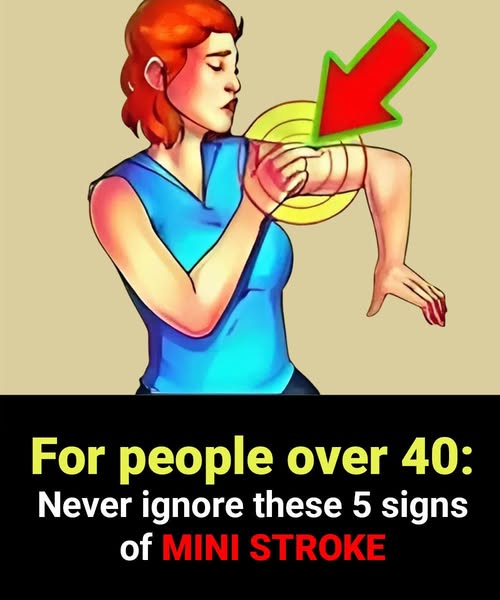Ignoring it could be deadly.
🔍 Common Symptoms of a Mini Stroke
TIA symptoms appear suddenly and may last just a few minutes — but they should never be ignored.
Use the F.A.S.T. acronym to recognize them:
| F | Face drooping | One side of the face may droop or feel numb | | A | Arm weakness | Can’t raise one arm, or it drifts downward | | S | Speech difficulty | Slurred speech, trouble speaking or understanding | | T | Time to call 911 | Even if symptoms disappear — call immediately |
✅ Other possible signs:
Sudden confusion or trouble thinking
Vision problems in one or both eyes
Dizziness, loss of balance, or coordination
Severe headache with no known cause
💡 Key difference: TIA symptoms resolve completely within 24 hours (often in under an hour).
But you can’t tell a TIA apart from a stroke without medical imaging — so always seek emergency care.
🚩 Why People Over 40 Are at Greater Risk
After 40, natural aging combines with lifestyle habits to increase the risk of vascular issues.
Key risk factors for TIA and stroke:
High blood pressure – The #1 risk factor; often silent and undiagnosed
High cholesterol – Leads to plaque buildup in arteries
Diabetes or prediabetes – Damages blood vessels and increases clotting risk
Smoking – Damages blood vessels and raises blood pressure
Obesity and sedentary lifestyle – Contribute to heart disease and poor circulation
Family history of stroke or heart disease
Atrial fibrillation (AFib) – An irregular heartbeat that can cause clots
Even if you feel fine, these conditions can be “silent killers” — doing damage long before symptoms appear.
🛡️ How to Reduce Your Risk After 40
The good news?
Up to 80% of strokes are preventable.
Here’s how to protect your brain and heart:
